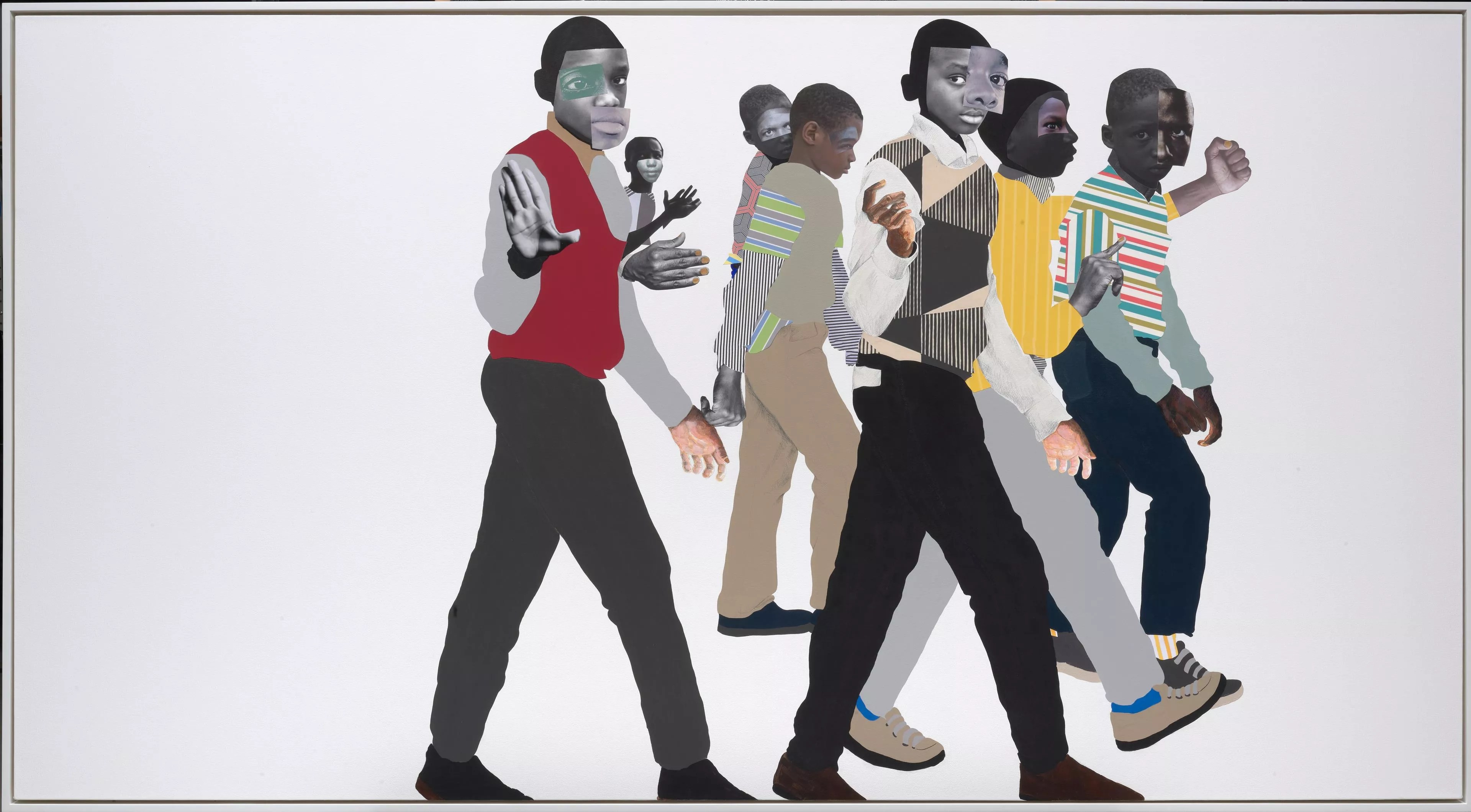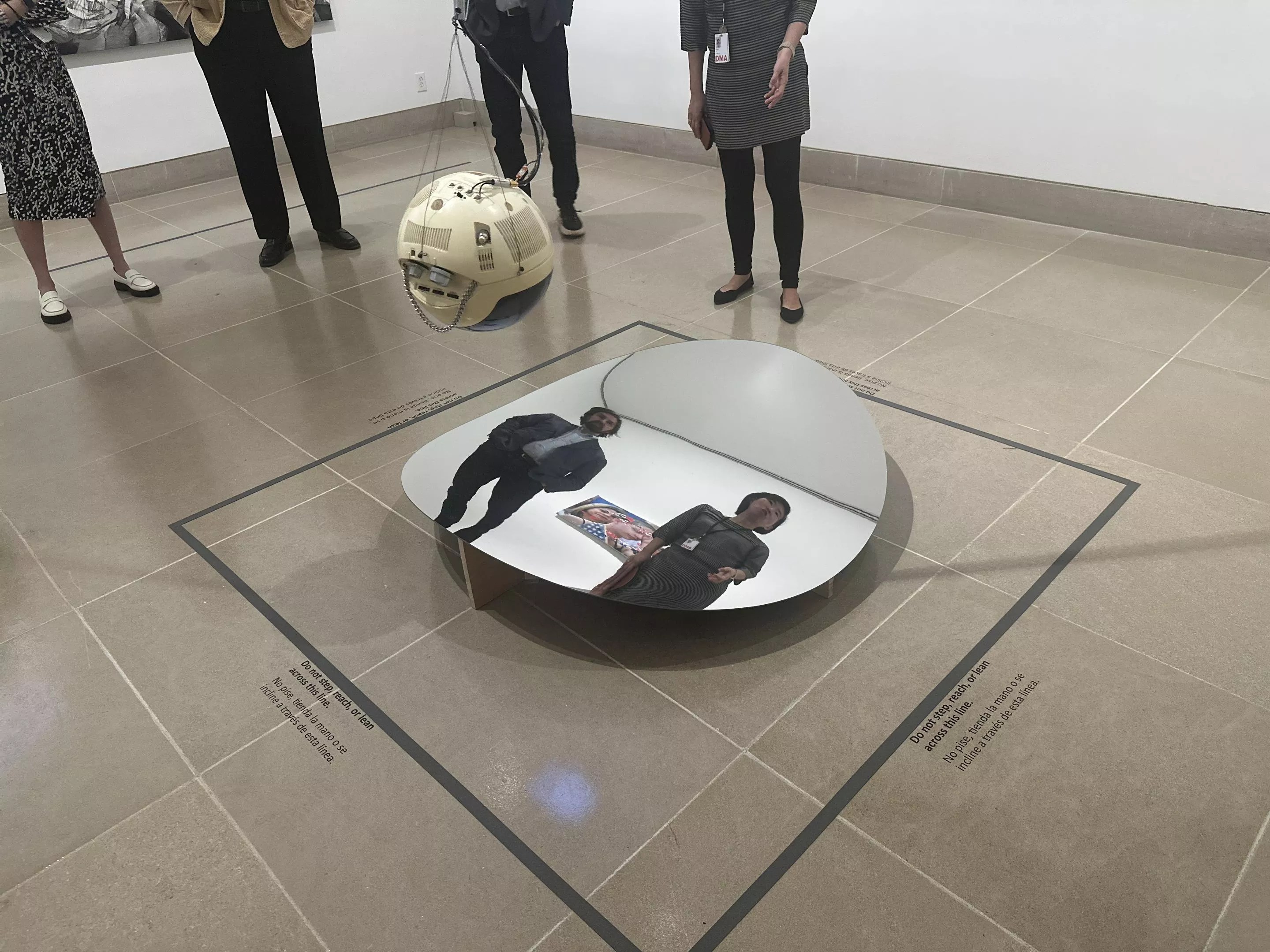
Carly May Gravley

Audio By Carbonatix
The Dallas Museum of Art debuted a new exhibition called When You See Me: Visibility in Contemporary Art/History on Monday. Co-curated by Dr. Anna Katherine Brodbeck, Dr. Vivian Li, Ade Omotosho and Veronica Myers, the collection showcases works by female artists, queer artists and artists of color and “grapples with the complexities of visibility.”
“Who’s pictured and how becomes the historical record of the future,” said Brodbeck during a media preview of the exhibition.
When You See Me, which takes its title from a Deborah Roberts piece of the same name, explores both the benefits and challenges that come with representing marginalized groups in art.

The DMA’s new exhibition gets its name from Deborah Roberts’ “When You See Me.”
Deborah Roberts
This year, make your gift count –
Invest in local news that matters.
Our work is funded by readers like you who make voluntary gifts because they value our work and want to see it continue. Make a contribution today to help us reach our $30,000 goal!
“In recent years, representation has increasingly become a focus in our cultural landscape,” said the co-curators in a statement to the press. “This phenomenon, spurred by an array of social and political transformations, has prompted artists working in various disciplines to contemplate its demands – and its limits.”
Each curator directed a different section of the sprawling exhibition. Veronica Myers, a curatorial assistant for contemporary and Asian art, created a space dedicated to queer artists. This is also Myers’ debut as a credited curator.
Myers’ space “reimagines queerness as an evolving interpersonal dialogue and act of community-building rather than as an innate, static identity,” the statement said. The collection represents various mediums ranging from photography by Peter Hujar and David Wojnarowics to a sculpture by Dallas native Puppies Puppies (the pseudonym of Jade Guanaro Kuriki-Olivo).
Myers has lived and worked in California, Chicago and London, but she feels particularly inspired by Dallas’ queer community.
“You hear stories of what Texas is like, but I knew that wasn’t true. It wasn’t the whole story, at least,” they tell the Observer. “Coming in, I realized very quickly that I have this choice: assimilation or representation.”

The new exhibition at the Dallas Museum of Art presents work by marginalized artists.
Carly May Gravley
Myers says that as they were curating their section the exhibition, there was some “well-intended hesitation” about potential backlash. They believe that emphasizes their point.
“That’s exactly why we’re here,” Myers says. “Because for every reactionary article I’m sure is going to be written about this space, like … if even one kid sees this room and sees themselves, that makes it worth it.
Myers’ section champions visibility, but others question its merits.
Ade Omotosho, a curator of contemporary art, is dedicated to work from Black artists. The collection revolves around art that uses found-object assemblage. There’s a recurring theme of resisting visibility and the idea that Black artists feeling pressure to uplift their race.
Featured artists such as Nari Ward, Senga Nengudi and Theaster Gates used overlooked and discarded materials, such as scrap metal, and “are concerned less with representational aesthetics than with the formal possibilities of abstraction.”
Omotosho describes such techniques as “inscribing yourself upon the historical record that erased you.”

Shigeko Kubota’s “Video Haiku – Hanging Piece,” with Dr. Vivian Li’s reflection (right).
Carly May Gravley
Dr. Vivian Li, another curator of contemporary art, themed her section around figuration, a form of modern art containing strong references to the real world.
“The artists in this section celebrate the ability to represent themselves and their own narratives, while simultaneously recognizing the historic and continued surveillance of their identities,” reads a statement to the press.
Li’s section also contains a dichotomy between the desire of marginalized groups to represent themselves in their art versus the stakes of visibility and surveillance. Pieces include Shigeko Kubota’s 1981 sculpture “Video Haiku – Hanging Piece,” which is made up of a camera swinging above a mirror, and Pacita Abad’s “How Mali Lost Her Accent,” which juxtaposes the successes of its Laotian subject who was accepted into multiple Ivy League schools with the pressure to assimilate into white institutions and lose her heritage.
Dr. Anna Katherine Brodbeck both started and completed our tour of the exhibit. The main space, which Brodbeck envisioned as “a confluence of each curator’s perspective,” offers Gerhard Richter’s “48 Portraits,” a series of prominent figures in politics, culture and academia between the mid-19th and mid-20th century. All of the subjects are white and male.
On the opposite wall, you can see Samuel Levi Jones’ response to Richter’s series “48 Portraits (Underexposed).” This set contains photographs of Black figures in history, but the prints are underexposed to the point where you have to lean in close to see them, one of the most distinct tie-ins to the theme of visibility.

Dr. Anna Katherine Brodbeck describes a work by enslaved potter David Drake.
Carly May Gravley
Brodbeck concluded her remarks by showing us a large ceramic vase created by David Drake, an enslaved potter who was active during the antebellum era, The vase is notable for being a signed piece from a time when enslaved people had no ownership of their work.
“Whether or not they are seen, the stories of underrepresented people have a pivotal impact on history, culture and our society,” said Dr. Agustín Arteaga, director at the DMA in his opening remarks. “We will never be able to tell every story, but it is our responsibility, as a leading cultural institution, to introduce our audiences to as many perspectives as possible as our world changes and grows.”
When You See Me: Visibility in Contemporary Art/History runs through April 13, 2025, at the Dallas Museum of Art. Guests can access the exhibition at no cost on the first Sunday of every month or purchase tickets on the DMA’s website.